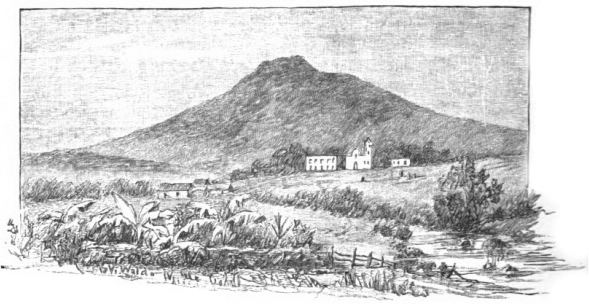 | ||
Manga de clavo zempoala veracruz day 5
Manga de Clavo was one of the most famous properties and favorite hacienda of Antonio López de Santa Anna, a historic site from the first half of the nineteenth century where he lived and made decisions that defined Mexican politics of its time, serving practically as presidential residence and government house until it was burned and partially destroyed by the invading United States Army during the Mexican–American War in 1847-1848 without ever again being restored.
Contents
- Manga de clavo zempoala veracruz day 5
- Oskar santell n escenas de manga de clavo ctep
- History
- Location
- References
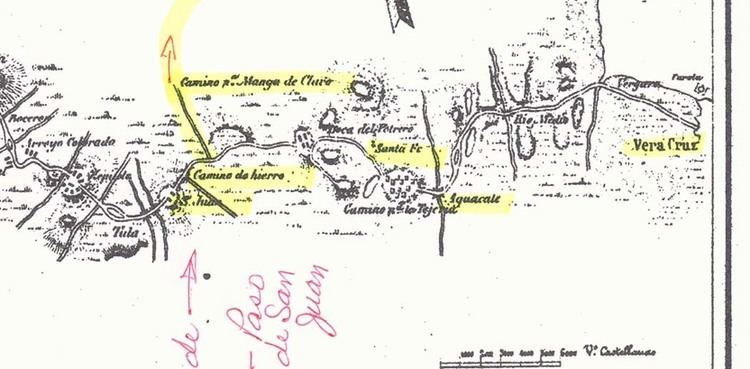
Impossible to think of Santa Anna without thinking Manga de Clavo.
Oskar santell n escenas de manga de clavo ctep
History
Santa Anna acquired the hacienda of Manga de Clavo in 1825 shortly before wedding María Inés de la Paz García his first wife, daughter of wealthy Spanish parents from Alvarado (Veracruz). During the years in which his influence in the region grew —occupying different positions, including the presidency of the Republic in six different occasions, between 1833 and 1855— he enlarged it in size and beauty, maintaining a privileged strategic location relative not only to its geographical surroundings but also of military, political and commercial importance.
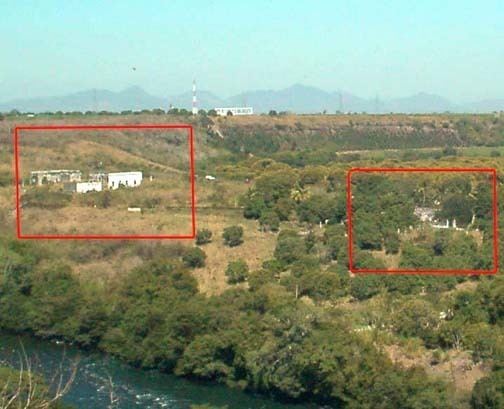
The economic production of Santa Anna's properties which included multiple villages dedicated to livestock, served the entire area between Veracruz and Jalapa allowing the growth of his estate, placed just at the fork of major roads leading to Mexico City, either by the Royal Highway to Jalapa or the one leading to Orizaba.
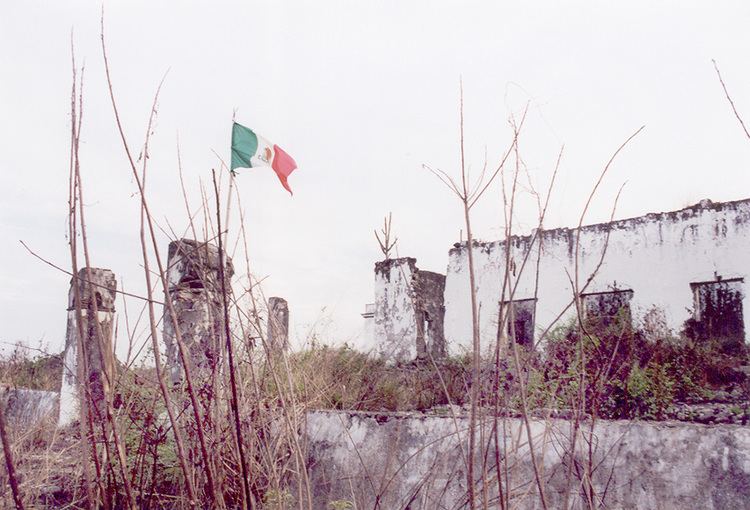
It is precisely in the lands of Manga de Clavo that the left leg of General Santa Anna was buried, which he lost after being badly wounded on the dock of the port of Veracruz on December 5, 1838, during the Pastry War, remaining in this site before it was transferred to the cemetery of Santa Paula in Mexico City on September 27, 1842, anniversary of the consummation of the Mexican Independence.
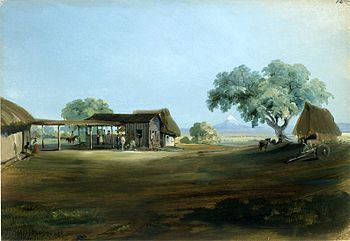
For Santa Anna this was a place of rest, pleasure and entertainment, suitable for intrigue and conspiracy, as well as refuge in adversity and defeat. Countless times he took the road to Manga de Clavo from the capital, slipping the responsibility of governing, abandoning presidential power only to return to the tranquility of his domain.
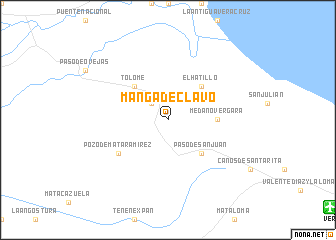
To Santa Anna fate was ungrateful, betrayed him, presenting the line on the horizon as an illusion and by crossing the threshold at the limit he had to return irredeemably to the starting point. This Mexican Sisyphus found himself in a lost dimension, on a replay, marching back and forth between National Palace and Manga de Clavo, trapped in the eternal return unable to break the curse.
Amongst the most important foreigners who visited Manga de Clavo is the Marquise Calderón de la Barca, wife of Angel Calderon de la Barca, minister plenipotentiary of Spain in Mexico from 1839 to 1842. In her book Life in Mexico, Calderón gives an account of the journey made from Veracruz to Manga de Clavo and the reception she had from Santa Anna and his family, this being one of the few examples and most famous description that exist of the estate:
We arrived about five at Manga de Clavo, after passing through leagues of natural garden, the property of Santa Anna. The house is pretty, slight-looking, and kept in nice order. We were received by an aide-de-camp in uniform, and by several officers, and conducted to a large, cool, agreeable apartment, with little furniture [...] In a little while entered General Santa Anna himself; a gentlemanly, good-looking, quietly-dressed, rather melancholy-looking person, with one leg [...] He has a sallow complexion, fine dark eyes, soft and penetrating, and an interesting expression of face. We then proceeded to look at the out-houses and offices; There are no gardens, but, as he observed, the whole country, which for twelve leagues square belongs to him, is a garden.
Although the importance of this site began to decline due to Santa Anna's frequent absences, María Inés' death in 1844 and the 1847-1858 invasion of the United States, the uprisings that began with the Plan of Ayutla revolution marked its destiny, forcing the fall of Santa Anna, his government and definitive exile in 1855, some of his properties were confiscated, most of the land was sold and soon Manga de Clavo was lost to landscape and memory.
Subsequently, there were indications that prove the survival of the hacienda in the last decade of the nineteenth century before the Mexican Revolution and the implementation of its agricultural policies, social struggle that ceased large estates and extensive lands that were divided and reduced in many cases only to its main enclosure or manor house, so it can be inferred that between the years of 1920 and 1940 its process of disappearance accelerated, becoming a ruin, consuming itself until being buried in the national unconscious.
Location
In the early twentieth century, the remains of Manga de Clavo gave birth to the town of Vargas which grew irregularly around the hacienda, appropriating stone and obliterating signs of its true trace, thus the mansion and adjacent outbuildings were gradually destroyed to the point that only ruins could be found at ground level, virtually ceasing to exist.
This circumstance has led to the spreading of false information about the original and exact location of the property, all together in history books and archives, web pages and social networks, as well as in intellectual circles, by enthusiastic chroniclers of the subject-matter and local townspeople in the region, being confused with other properties, mainly the hacienda of El Lencero in the outskirts of Jalapa and the vestiges of a residence and barracks in the vicinity of Puente Nacional, very close to the historic Puente Nacional bridge, both of which Santa Anna was also owner and are still clearly visible on the Veracruz countryside today.
The site where the estate of Manga de Clavo currently stands is located in the town of Vargas, 19 miles from the port of Veracruz in the municipality and state of the same name. Only a few foundations, scattered stones and a well survive, remains that Roberto Williams Garcia, academic and researcher of Veracruz cultural environment was able to visit in 1967:
I asked for Manga de Clavo and was pointed to a couple of hundred meters from the railway, adjacent to wooden shacks within a low-rise thin brush [...] Nearby is "The Well of Santa Anna" without curbstone and sixty eight feet deep, with some sort of door half way down –which I was informed- lead to a passage, a tunnel...
